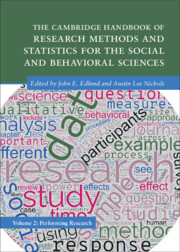 The Cambridge Handbook of Research Methods and Statistics for the Social and Behavioral Sciences
The Cambridge Handbook of Research Methods and Statistics for the Social and Behavioral Sciences from Part V - Physiological Measures
Published online by Cambridge University Press: 12 December 2024
Cardiovascular measures for social and behavioral research have been historically popular because they are often non-invasive, inexpensive, and capture the dynamic nature of cardiac physiology. Among adults, many measures are static, like height – they do not change over time – but importantly, cardiovascular measures change moment-to-moment. For example, measuring the heart rate is easy and valuable for documenting different health conditions and can be predictive of overall longevity and disease. Electronic medical records provide access to retrospective high-quality cardiac measures; plus, now that consumer wearable devices are ubiquitous, it is even easier to prospectively collect cardiovascular measures that are continuous and automatically obtained. Thus, cardiovascular measures are important metrics of overall health, and their dynamic nature is important to capture with both established and novel scientific instruments. This chapter will focus on physiological measures that validate psychometric data, describe types of cardiovascular measures of health, and present future directions of cardiovascular measures in research.
To save this book to your Kindle, first ensure [email protected] is added to your Approved Personal Document E-mail List under your Personal Document Settings on the Manage Your Content and Devices page of your Amazon account. Then enter the ‘name’ part of your Kindle email address below. Find out more about saving to your Kindle.
Note you can select to save to either the @free.kindle.com or @kindle.com variations. ‘@free.kindle.com’ emails are free but can only be saved to your device when it is connected to wi-fi. ‘@kindle.com’ emails can be delivered even when you are not connected to wi-fi, but note that service fees apply.
Find out more about the Kindle Personal Document Service.
To save content items to your account, please confirm that you agree to abide by our usage policies. If this is the first time you use this feature, you will be asked to authorise Cambridge Core to connect with your account. Find out more about saving content to Dropbox.
To save content items to your account, please confirm that you agree to abide by our usage policies. If this is the first time you use this feature, you will be asked to authorise Cambridge Core to connect with your account. Find out more about saving content to Google Drive.